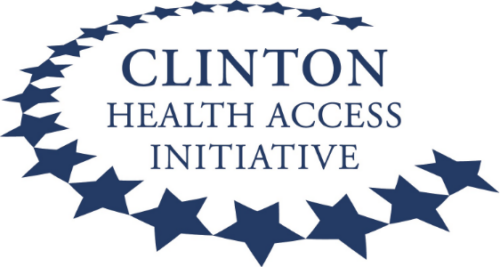8 things to know about drug-resistant tuberculosis
by Sandeep Juneja, Senior Vice President, Market Access, TB Alliance
19 December 2022 | Insight
Here are eight things to know about drug-resistant TB that are important in helping us bring an end to this age-old disease.
Drug-resistant tuberculosis (DR-TB) forms when long, complex, outdated drug regimens are improperly administered, or when people with TB stop taking their medicines before the disease has been fully eradicated from their body. Once a drug-resistant strain has developed, it can be transmitted directly to others just like drug-susceptible TB (DS-TB).
TB is found in every country around the world and is the leading cause of infectious disease death globally. In 2021, 10.6 million people fell ill with TB and 1.6 million people died.
We cannot hope to end the TB pandemic without developing new and improved treatments for all forms of TB, and without ensuring access to shorter, simpler regimens for drug-resistant TB.
Here are eight important things about drug-resistant TB you may not have known, but that are important in helping us bring an end to this age-old disease.
1) Drug-resistant TB accounts for about 1 in 3 deaths from drug-resistant infections
More than 500,000 people develop drug-resistant forms of TB each year, and this issue of drug-resistance is becoming more and more widespread. This happens when the drugs designed to treat specific diseases, like TB, no longer work. That’s why it’s so important to develop new treatments that are effective against these pathogens – and to get them into the hands of those who need them. By ensuring global accessibility to new and better treatments that work, we can help slow down the spread of drug-resistant infections, like TB.
2) “Once, a diagnosis of extensively drug-resistant TB meant quick death”
Until recently, a diagnosis of highly drug-resistant TB used to be seen as a death sentence in many settings. During the first outbreak of extensively drug-resistant TB in KwaZulu-Natal, South Africa in 2005, 52 of 53 people who contracted the disease died. Read more about this from a 2019 article in The New York Times.
3) Prior to new treatments, DR-TB medicines were woefully inadequate
DR-TB used to be much more difficult to treat—requiring patients to take more than 14,000 pills over 18 months or longer. After this burdensome treatment, people with these forms of highly drug-resistant TB were only cured about half of the time. That all changed with the development and regulatory approval of a three-drug, six-month, all-oral treatment regimen for DR-TB. With this regimen, we are now seeing a cure rate of about 90%. Read more about recent innovative scientific developments.
4) Now, we must expand access to DR-TB treatment regimens
For the first time, almost all patients with DR-TB can be treated in six months with an all-oral regimen. Based on clinical evidence, the World Health Organization (WHO) published new guidelines that allow for the programmatic implementation of treating almost all forms of DR-TB with this short, six-month, all-oral treatment regimen. Now, TB Alliance has also entered a new partnership with MedAccess and Viatris to reduce the price of a key component of this regimen, which will help expand access to patients around the world.
5) Short, all-oral, six-month regimens can offer countries cost savings
A new study published in PLOS Global Public Health estimates that the cost of implementing short, all-oral, six-month regimens is potentially 40-90% less expensive than regimens previously used to treat highly drug-resistant TB. This study found that treatment regimens that are now included in WHO guidelines for the treatment of DR-TB could save governments up to US$740 million annually. These savings would be enough to fund almost another year’s worth of DR-TB treatments for more than 400,000 people. With the recently announced price reduction, TB Alliance’s partner MedAccess projects that the volume guarantee will enable even more patients globally to be treated successfully with DR-TB regimens and help save on costs for patients and health systems.
6) Only with global commitment and collaboration can we hope to end TB
Though many important advances in the treatment of highly drug-resistant TB have been made in recent years, the need to invest in TB research and development (R&D) is even more important considering the ongoing COVID-19 pandemic. This new global health threat has reversed hard-won progress against TB. In 2020 when COVID-19 was surging around the world, we saw the first increase in TB deaths since 2005, and a 15 percent reduction in the number of people treated for DR-TB. TB now, once again, holds the distinction as the world’s deadliest infectious disease. A goal of a TB-free world can only be realized with true global commitment and collaboration.
7) Funding continues to fall short, year after year
Every year, 10 million people fall ill with TB, and last year 1.6 million people died. However, year after year, we continue to see reports that funding levels fall far short of what is needed to truly have a chance of ending the TB pandemic. It is only with appropriate funding and a global commitment to protecting global health and fighting pandemics that we can continue to advance science to develop life-saving tools and treatments.
8) Global partnerships help advance TB cures
By working with partners, TB Alliance advances the discovery, development, and delivery of new TB cures. Overcoming the TB pandemic requires new and dramatically improved therapies that will be effective against all forms of TB and can be given to all TB patients, but our job also isn’t done until any new treatments are in the hands of those who need them around the world.
Find out more about how we work with partners to advance the fight to end TB: www.tballiance.org.
This article was first published on the TB Alliance website.




















